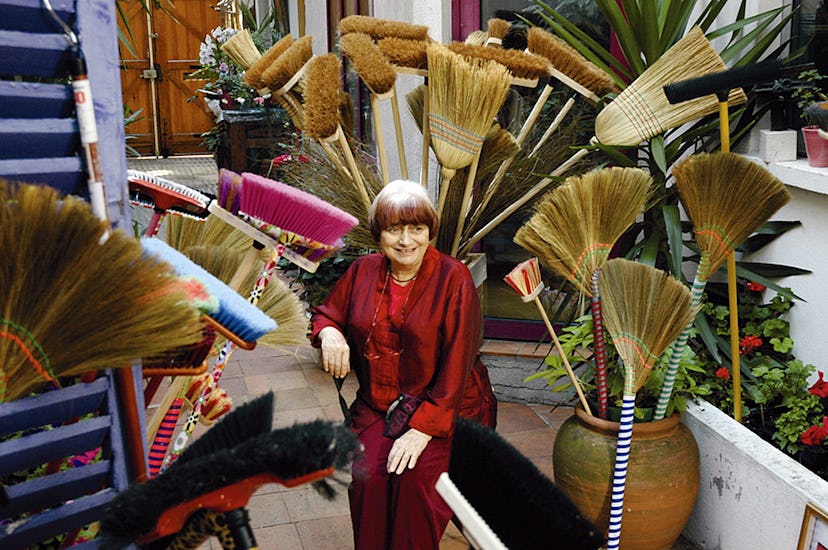The Three Agnès Varda Documentaries That Contain the Secret to Life

Agnès Varda made some of the greatest masterpieces of cinema: Le Bonheur, Vagabond, Cléo From 5 to 7. It’s her idiosyncratic and intelligent documentaries, though, that have impressed on my mind so deeply and indelibly. I would say they have impressed on my soul, too, but that word feels too soft for the always precise Varda, who passed away on Friday at the age of 90.
There is a group of documentaries she made in California from the 1960’s to the 1980’s (currently on Criterion and hopefully on their streaming channel launching next month) that show off her insatiable curiosity and sense of fun. These include Murs Murs (1980), about Los Angeles murals and culture in the early 1980’s, and Uncle Yanco (1967), about an artist relative who lived on a houseboat in Sausalito and whom Varda often shoots through a heart-shaped red gel.
But it’s one of her most recent and lesser-seen documentaries, From Here to There, which I recommend watching this weekend to celebrate the life of this great director. This five-part “travel series” was made for French television and is currently available on Fandor (along with many other Varda films). The series plays as if Rick Steves had a sharper, more humanistic mind, interested only in people and art instead of monuments. Varda traveled to various places over a year and filmed Chris Marker in Boston (just before he passed away) and then a bald woman in Stockholm who came to interview Varda and then was coaxed to tell the story of losing all her hair. Few things are as delightful in recent motion pictures as the scene of the reticent Marker’s computer avatar dancing with his cartoon cat, Guillaume, and then with Varda’s avatar in Second Life.
A still from *The Beaches of Agnes*, 2008.
From Here to There was the follow up to another documentary, The Beaches of Agnès from 2008. These two films may be considered, along with The Gleaners and I (2000), as a sort of digital documentary triptych. As Varda says in that latter film, explaining how the gleaners who scavenged for corn or wheat in the fields were historically female: “There is another woman gleaning in this film, that’s me. I’m happy to drop the ears of wheat and pick up my camera. These new small cameras they are digital, fantastic. Their effects are stroboscopic, narcissistic even hyper-realistic.”
Recently, at the Marrakech Film Festival, where Varda received an honorary award and stood on her seat to cheer for Robert De Niro when he was honored, she was asked about how she’s become a character in these recent films. “It’s because I changed my hair,” she explained. “I was becoming white—I’m totally white—and I say maybe I could do something. I decided I would paint the edge of the white. So I have to paint this every two months. I have to paint the border. And I became like a comic character. Old people are so boring sometimes. I’d rather be a funny old lady.”
A still from *The Gleaners and I*, 2000.
So one of the strongest artists of the 20th and early 21st became a funny old lady, even a meme, with her complete self-awareness. Yet the real strength of these three movies, this triptych, is her voice and her words. She was a beautiful writer. Varda created exploratory essays with these movies, which move in strange turns and surprises, twisting all around the object to see it from odd angles before glimpsing it whole. Her personage may be the main character, but it’s her deep, soothing narration and the witty, wise way she describes the world that I’ll always carry with me.
Some friends and I would occasionally ask each other of our own lives: What would Agnès do?—or, What Would Varda Do: WWVD? What would Varda see, what would she say, if she looked around at any situation. This is not a good way to make original films! But asking What Would Varda see and say is a good tip to pull back the curtain from any real life scene, to see more clearly, and to live a richer life.